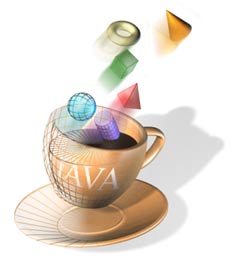
FB 4
Internationale Media and Computing
MeSoII: Media Software II
Sommersemester 2003

|
FB 4 |
This week we will finish off the Application set of tutorials with Part 3: Receiving Input with Text Fields and Check Boxes, and Event Handling Basics. We are now going to get that DiverLog finished up! Good luck!
Read the planning section. Yes, there are a lot of usability problems with this interface. Those who are bored should see if they can come up with a better layout. Include all the variables in your Diver program that correspond to the elements on the screen. Can you explain the names chosen for the variables? Take a guess!
The URL to your report, which will describe what you did during the exercise and include links to your code, is due in email box of your instructor by 8.00 next Wednesday. Do not forget to put your names on the top of the report! It is also a good idea put the number of the exercise somewhere in the title of your report.... When you send the URL of the report to your instructor, always include your partner in the CC. That way we don't get either 2 emails or none, because each or your thought the other was sending it. This has the added advantage that when we answer you, we can immediately answer both of you without having to look up the email account of your partner.